
Emil Theodor Kocher was a Swiss physician and medical researcher who received the 1909 Nobel Prize in Physiology or Medicine for his work in the physiology, pathology and surgery of the thyroid. Among his many accomplishments are the introduction and promotion of aseptic surgery and scientific methods in surgery, specifically reducing the mortality of thyroidectomies below 1% in his operations.
A laparotomy is a surgical procedure involving a surgical incision through the abdominal wall to gain access into the abdominal cavity. It is also known as a celiotomy.

Hysterectomy is the surgical removal of the uterus and cervix. Supracervical hysterectomy refers to removal of the uterus while the cervix is spared. These procedures may also involve removal of the ovaries (oophorectomy), fallopian tubes (salpingectomy), and other surrounding structures. The term “partial” or “total” hysterectomy are lay-terms that incorrectly describe the addition or omission of oophorectomy at the time of hysterectomy. These procedures are usually performed by a gynecologist. Removal of the uterus renders the patient unable to bear children and has surgical risks as well as long-term effects, so the surgery is normally recommended only when other treatment options are not available or have failed. It is the second most commonly performed gynecological surgical procedure, after cesarean section, in the United States. Nearly 68 percent were performed for conditions such as endometriosis, irregular bleeding, and uterine fibroids. It is expected that the frequency of hysterectomies for non-malignant indications will continue to fall given the development of alternative treatment options.
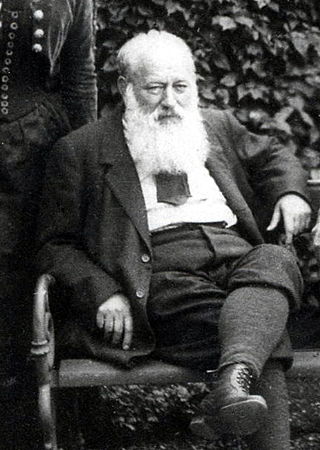
Christian Albert Theodor Billroth was a German surgeon and amateur musician.
Henry Clay Dalton was superintendent of the St. Louis City Hospital, Missouri, United States, from 1886 to 1892, and later a professor of abdominal and clinical surgery at Marion Sims College of Medicine. He is noted for being the first American to perform the suturing of the pericardium on record. Spanish surgeon Francisco Romero was documented with performing two successful surgeries in 1801 and French surgeon Dominique Jean Larrey was documented as successfully performing surgery on a woman's pericardium in 1810.

Benign lymphoepithelial lesion or Mikulicz' disease is a type of benign enlargement of the parotid and/or lacrimal glands. This pathologic state is sometimes, but not always, associated with Sjögren's syndrome.
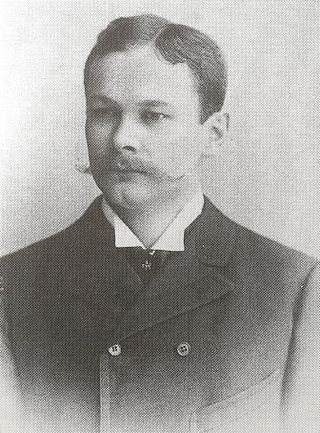
Alexander Tietze was a German surgeon born in Liebenau. Tietze syndrome is named after him.
Maria Koepcke was a German ornithologist known for her work with Neotropical bird species. Koepcke was a well-respected authority in South American ornithology and her work is still referenced today. For her efforts, she is commemorated in the scientific names of four Peruvian bird species and, along with her husband, a Peruvian lizard species.
Mikulicz's drain is a name used for a procedure used in emergency medicine to control bleeding. Today, it is primarily used in post-operative surgery as a last resort when all other methods to control bleeding fail. The procedure involves pushing a layer of gauze into the wound, then packing in several more layers of gauze as the original layer is pushed deeper into the cavity. Pressure is thus induced while the capillary action of the improvised gauze-sac secures drainage.
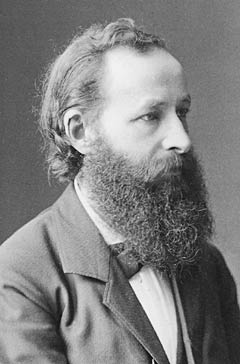
Robert Michaelis von Olshausen was a German obstetrician and gynecologist. He was born in Kiel and died in Berlin. He was the son of Justus Olshausen (1800–82), a professor of Oriental languages at the University of Kiel.
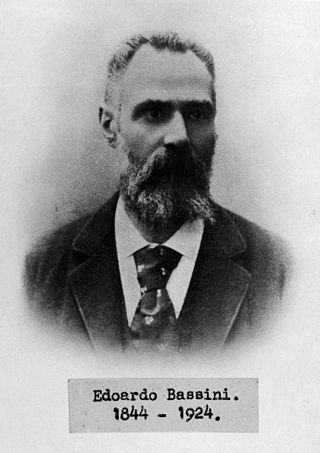
Edoardo Bassini was an Italian surgeon born in Pavia.

Carl Georg Friedrich Wilhelm Flügge was a German bacteriologist and hygienist. His finding that pathogens were present in expiratory droplets, the eponymous Flügge droplets, laid ground for the concept of droplet transmission as a route for the spread of respiratory infectious diseases.
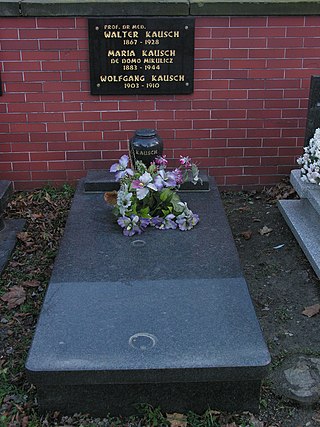
Walther Kausch was a German surgeon. He was involved in improvements made to the pancreaticoduodenectomy process.
The von Graefe knife was a tool used to make corneal incisions in cataract surgery. Use of the knife demanded a high level of skill and mastery, and was eventually supplanted by modifications of cataract surgery through the Kelman phacoemulsification technique that emphasized a small incision.

Walter Hermann von Heineke was a German surgeon. He was the son of physician Karl Friedrich Heineke (1798–1857).
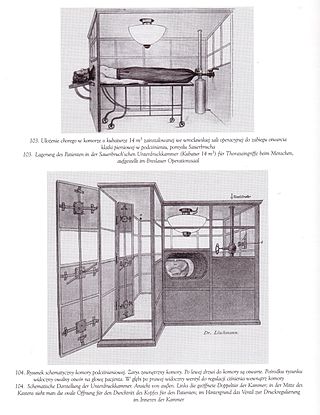
A Sauerbruch chamber, is a hermetically sealed chamber where surgical operations of the thorax are carried out, preventing complication by elevating or reducing air pressure. It was developed by the German surgeon Ferdinand Sauerbruch and first used in 1904.
Heineke–Mikulicz Strictureplasty is the most common among the conventional strictureplasties. Emmanuel Lee introduced this strictureplasty for the treatment of Crohn's disease in 1976. A similar technique for tubercular strictures of the terminal ileum was reported by RN Katariya et al. in 1977 This technique is similar to a Heineke–Mikulicz pyloroplasty from which it derives its name.
Finney strictureplasty is indicated for strictures up to 15 centimeters. The Finney strictureplasty is performed by folding the diseased bowel on itself and creating a large opening between the two loops. This strictureplasty can be used to address longer strictures than those manageable with the Heineke-Mikulicz technique.
The side-to-side isoperistaltic strictureplasty, also now known as the Michelassi stricureplasty, was designed to avoid sacrificing large amounts of small bowel in case of long segments of stricturing Crohn's disease.
Fabrizio Michelassi, M.D., F.A.C.S. is the Lewis Atterbury Stimson Professor, and Chairman of the Department of Surgery at Weill Cornell Medicine and Surgeon-in-Chief at NewYork-Presbyterian/Weill Cornell Medical Center.












